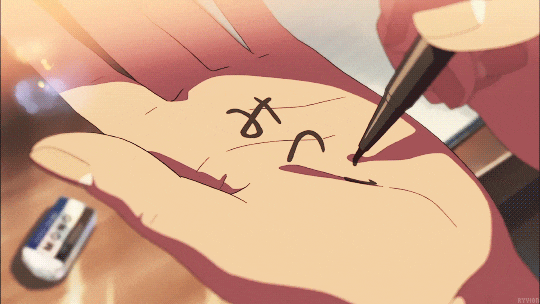Does stroke order really matter? 📝
And can we get away without learning it in character-based languages?
Last week, my principal distributed hiragana and katakana stroke order sheets during a staff meeting. She asked us to circle the characters we've been writing incorrectly, having noticed several of us making mistakes on the board. For a split second, I thought she was joking. After all, I learned the uppercase and lowercase letters of the English alphabet in a certain way and rarely deviated from it. However, as my colleagues began tracing the characters on their desks with their fingers while studying the handouts, I realized I was in trouble. Sure enough, there were a couple that I had been writing incorrectly all this time, even though I had learned them properly in calligraphy class!
There have been countless instances where I would freeze before my chalk touched the blackboard because I had forgotten how a kanji character was written. Thankfully, my students are always eager to teach me, with several sure to practically leap from their seats, eager for a chance to show off. Many of them have also reassured me that the order of writing doesn't matter as long as it looks neat and all the radicals are in place. I’ve always found that comment suspicious because the way I write my print letters in English enables me to write in cursive efficiently. However, I've also observed numerous Japanese adults getting stroke orders wrong, and I don’t think it impacts their lives in any major way.
While stroke order does seem to play a small and seemingly insignificant role in the overall process of language learning, understanding and applying it significantly influences writing in a second language. In fact, academic resources1 indicate that it enhances writing speed, accuracy, and legibility. When learners follow the correct stroke order, it facilitates the fluent and efficient writing of characters. Here are some key points to consider:
Writing Speed: Empirical studies show that learning stroke order allows learners to write characters more quickly. Following a specific order helps develop muscle memory, enabling writers to produce characters with greater speed and fluidity.
Writing Accuracy: Proper stroke order ensures that characters are written correctly. It helps learners maintain the correct proportions and balance between strokes, resulting in more accurate and recognizable characters.
Legibility: Following stroke order enhances the legibility of written characters. When characters are written in the correct order, they appear more balanced and visually appealing. This improves readability for both the writer and the reader. Kanji like 人 and 入 won’t be interchanged anytime soon.
Recognition and Comprehension: Knowing stroke order aids in recognizing and comprehending characters written by others. When learners are familiar with the correct stroke order, they can more easily decipher handwritten characters, even if they are slightly different from printed or typed versions.
Digital Input: Many digital input systems, such as handwriting recognition software, rely on stroke order to accurately identify characters. By following the correct stroke order, learners can improve their digital writing experience and ensure that the software recognizes the intended characters.
Years ago, I listened to a podcast on language learning where said the host something to the effect of, "Just push through the hard parts. You don't want to present yourself like an illiterate in a language everyone around you speaks." That comment has always haunted me, as the possibility of appearing “illiterate” will likely take me a lifetime to overcome. However, the saying "If you're going to learn it anyway, you might as well learn correctly," makes sense because a correct foundation can efficiently lead to advanced skill development.
What do you think? Are these small practices worth the effort?
The article “The Effects of Stroke Order on Learning to Write Chinese Characters: A Meta-Analysis” by Zhang, Tardif, and Shu (2013), is a meta-analysis examines the effects of stroke order on Chinese character writing among both native Chinese speakers and second language learners. The study found that learning stroke order significantly improves character writing accuracy and speed.
Another relevant study is “The Role of Stroke Order and Orientation in Chinese Character Learning” by Kao, Chao, and Chen (2019). This study investigates the effects of stroke order and orientation on character recognition and production among second language learners. The findings suggest that learning stroke order and orientation enhances character recognition and production accuracy.






Korean alphabet is obviously much different, but they kept the concept of stroke orders to teach writing. I find it so rewarding how learning the correct order is an excellent place to start writing legibly, and is also necessary to be able to read "cursive" (letters written faster without lifting the pen).
The rule is basically: don't interpret it based on the Roman alphabet, learn the stroke order first to understand the letters, but then, have fun with it! 😊
Stroke order matters, especially for hanzi, since some characters are in fact composed of other characters, the stroke order often reveals some inner logic to the character. Learning correct brush-stroke order also makes it easier to remember the character, its one more memory hook. Ten starts as one for example 一 ,十。